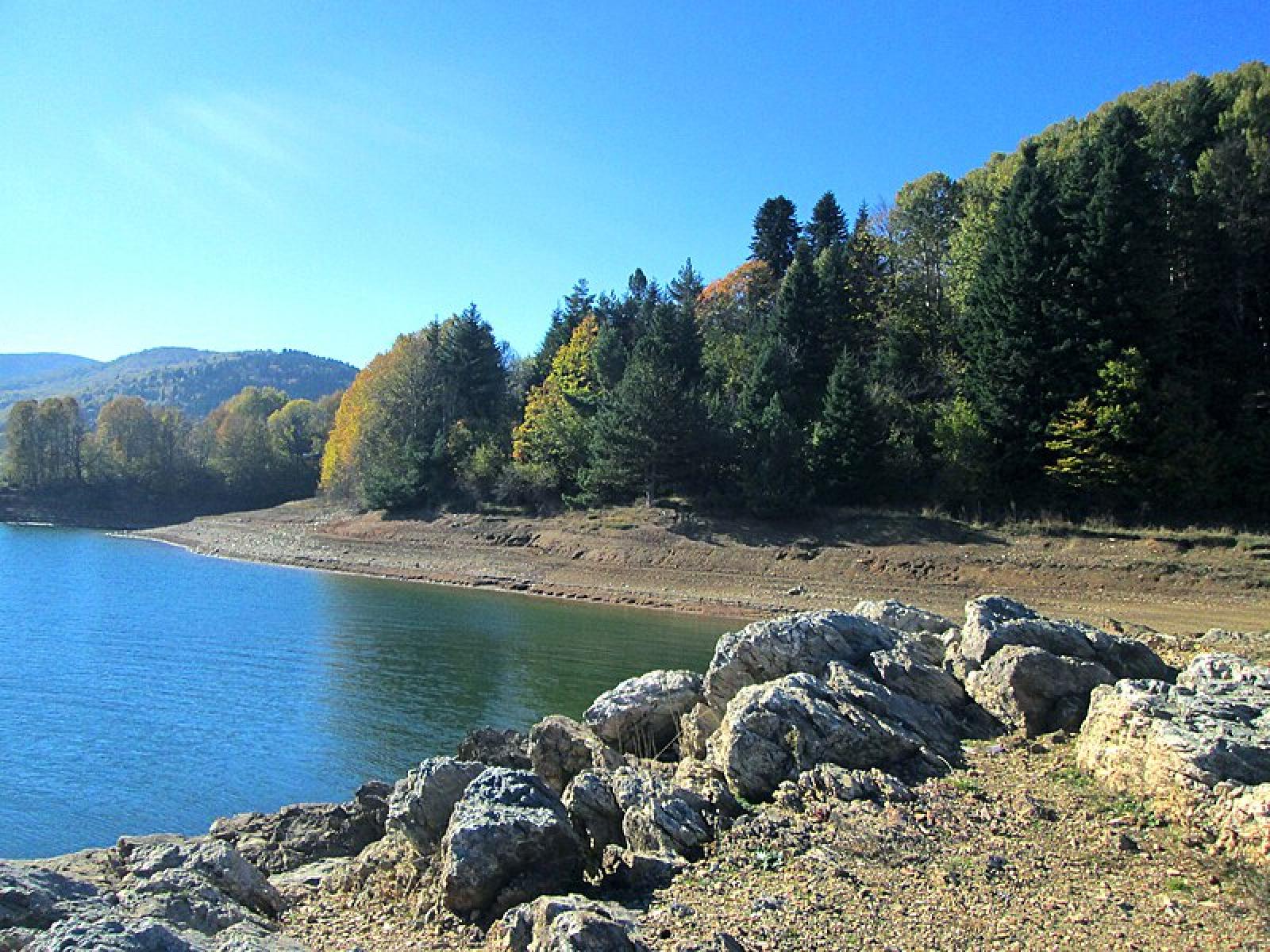Revealing the Underlying Mechanisms in Seawater-Driven Coastal Conifer Mortality
Investigating the Impact of Rising Sea Levels on Coastal Conifer Forests Through Dynamic Vegetation Modeling

The same mechanistic responses to soil salinity and hypoxia lead to different total mortality rates and alter the relative importance of carbon starvation and hydraulic failure at the three sites in this study.
(Image: Wikimedia Commons)
The Science
A largely unanswered question in coastal forest science is why trees die when exposed to rising sea levels. This study found that different mechanisms cause tree death depending on how quickly and severely sea water exposure occurs. With sudden sea water exposure, there is a rapid increase in soil salinity and trees die quickly due to both carbon starvation (lack of energy) and hydraulic failure (inability to transport water). When sea levels rise slowly with a corresponding protracted increase in soil salinity, trees mainly die from hydraulic failure. This research helps predict how coastal forests will respond to future sea level changes which is crucial for protecting these ecosystems.
The Impact
This research addresses the pressing issue of coastal tree death due to rising sea levels. This is crucial because dying coastal forests, known as "ghost forests," reduce available habitat, affect ecosystem services, and reduce natural storm protection. This study is the first to model how seawater affects tree health and survival. Researchers found that sudden seawater exposure causes rapid tree death, while gradual exposure leads to slower, but still significant, mortality. This innovative model helps predict future forest changes and guide conservation efforts. It also enhances fields such as climate science and environmental management by improving understanding of how coastal ecosystems respond to climate change.
Summary
This research investigates the mechanisms of conifer mortality under different rates of seawater exposure, focusing on the physiological responses of coastal forests to rising salinity and hypoxia. A mechanistic vegetation demography model (FATES-Hydro) was used to simulate the impact of seawater on conifer forests at three sites: Beaver Creek (BC) on the Pacific coast, and Goodwin Island (GWI) and Moneystump (MS) on the Atlantic coast. This model incorporates the effects of salinity and hypoxia on plant hydraulics and carbon dynamics, providing insights into the processes driving tree mortality.
Key findings reveal that the rate and pattern of tree mortality differ significantly between sites due to variations in seawater exposure. At BC, a sudden increase in salinity leads to rapid declines in photosynthetic capacity and root biomass, causing both hydraulic failure and carbon starvation. In contrast, the gradual rise in salinity at GWI and MS results in a slower decline in tree function, with hydraulic failure being the dominant cause of mortality initially, followed by carbon starvation over time. This research highlights the importance of understanding the physiological mechanisms of tree mortality to improve predictions of coastal forest responses to sea level rise and climate change.
Contacts
Vanessa L. Bailey, Pacific Northwest National Laboratory, vanessa.bailey@pnnl.gov, COMPASS-FME principal investigator
Funding
This research is supported by the Department of Energy (DOE), Office of Science, Biological and Environmental Research program under the Environmental System Science focus area. The contribution originates from the Coastal Observations, Mechanisms, and Predictions Across Systems and Scales - Field, Measurements, and Experiments (COMPASS-FME) project, a multi-institutional program led by Pacific Northwest National Laboratory (PNNL), operating under a contract through Battelle Memorial Institute for the DOE.
Related Links
Published: July 17, 2025
Ding, J., McDowell, N., Fang, Y., Ward, N., Kirwan, M. L., Regier, P., ... & Bailey, V. (2023). Modeling the mechanisms of conifer mortality under seawater exposure. New Phytologist, 239(5), 1679-1691. https://doi.org/10.1111/nph.19076.